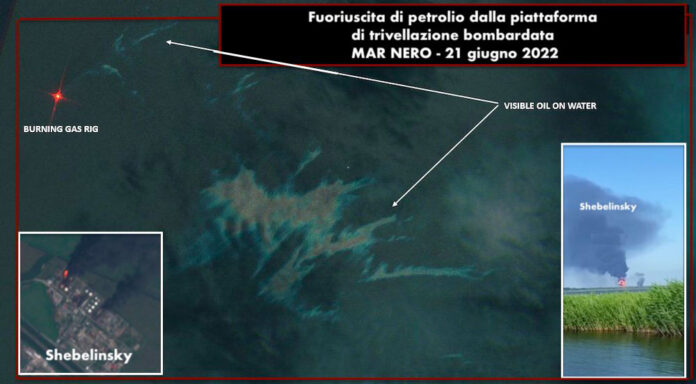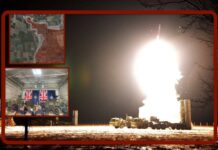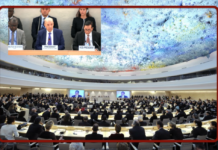
According to Russian ecological associations, drilling platforms cannot be military targets. “The Ukrainian authorities threaten entire water areas. Kiev, in its agony, is essentially trying to destroy the Black Sea,’ they wrote on their telegram channels.
The Ukrainian attack on three drilling platforms in Chornomorneftegaz led to a major oil spill in the Black Sea. The area of the oil spill is about 9 square kilometres and is moving towards the coast of Romania.
On 23 June, for the sixth consecutive day, the Shebelinsky oil and gas refinery in the Kiev-controlled Kharkiv region is on fire, it is expected to run out of stock, but the issue is dragging on. The plant was hit by Russian missiles. On 20 June, satellite images showed a column of smoke rising into the sky.
The Ukrainians then carried out an attack on the Novoshakhtinsk oil refinery on Russian territory. Several drones were used to attack the refinery, which managed to bypass the Russian air defence and damage the heat exchanger tower. The overall fire did not take place and, after the refinery has been repaired, it is expected to operate at full capacity again.
And while the facilities are on fire, the Russian gas taps are shut off. Gazprom’s number one, Aleksey Miller told SPIEF that the drop in gas flow is the fault of Siemens’ maintenance. His words were echoed by the German Prime Minister who said on 20 June: ‘Russia’s claim that gas supplies have been reduced due to a lack of spare parts because of sanctions is “unbelievable”‘.
Earlier, Siemens Energy claimed that the delay in the delivery of a repaired pump for the Nord Stream pipeline was due to Canadian sanctions. Siemens is ‘unable to supply refurbished gas turbines to the customer’, the company said.
Gas prices on the European gas exchange accelerated sharply to 10% on 15 June after Gazprom announced a reduction in supplies via Nord Stream. The price rose above $1,200 per 1,000 cubic metres.
Graziella Giangiulio
















